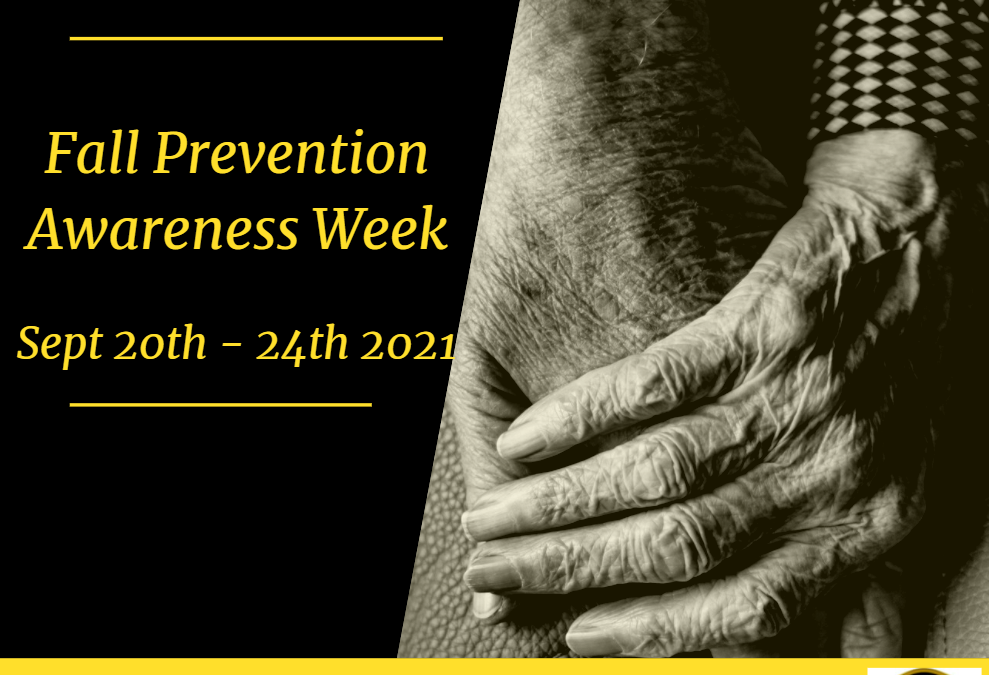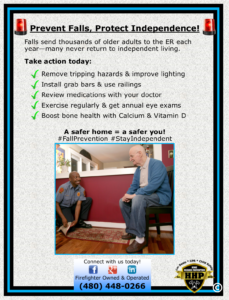Stay Safe This Fall: Tips for Preventing Falls During Fall Prevention Awareness Week!
As we age, our bodies change in ways that increase the risk of falling. Falls are the leading cause of injury among older adults, with millions of individuals over 65 experiencing falls each year. Shockingly, many do not report these falls to their doctors, even though one fall doubles the chances of falling again. The good news? Many falls can be prevented!
September 23rd – 27th is Fall Prevention Awareness Week! This is the perfect time to educate ourselves and our loved ones on simple strategies to reduce fall risks and maintain independence.
Why Do Older Adults Fall? Several factors contribute to falls, including: ✔️ Tripping or slipping due to poor footing ✔️ Balance problems or slow reflexes ✔️ Weak muscles ✔️ Poor vision ✔️ Medication side effects ✔️ Chronic illnesses
Most falls result from a combination of these factors, but the fear of falling doesn’t have to control your life! Let’s explore six essential tips to help prevent falls and stay safe.
1. Talk to Your Doctor
Schedule a fall-prevention appointment with your healthcare provider. Review all medications (including prescriptions, over-the-counter drugs, and supplements) to check for side effects like dizziness or drowsiness. Your doctor can help adjust dosages or recommend alternative treatments to minimize fall risks.
2. Assess Your Fall Risk & Manage Health Conditions
If you’ve had previous falls, be sure to write down when and where they happened. Your doctor may evaluate your balance, vision, joint pain, and muscle strength to identify risk factors and recommend lifestyle changes or therapy.
3. Keep Moving!
Engaging in regular physical activity strengthens core muscles, improves balance, and boosts coordination. Consider low-impact exercises such as: ✔️ Walking ✔️ Water aerobics ✔️ Tai Chi ✔️ Light weight training
Talk to your doctor before starting a new workout routine, and choose activities that suit your fitness level.
4. Make Your Home Safer
According to the CDC, 55% of falls happen at home. Reduce your risk by: ✔️ Keeping floors clutter-free ✔️ Using non-slip mats in bathrooms ✔️ Securing loose rugs ✔️ Installing grab bars near toilets and showers ✔️ Keeping walkways well-lit
5. Wear Proper Footwear
Say goodbye to high heels, loose slippers, and slick-soled shoes! Opt for well-fitted, non-slip footwear with sturdy soles. Walking in socks can also be hazardous, so choose shoes with good traction for indoor and outdoor use.
6. Install Handrails & Safety Features
Handrails are a must for stairways and steps. If you have difficulty using stairs, consider installing a stair lift or rearranging your living space to limit the need for stairs.
Final Thoughts: Stay Active, Stay Independent! By making small adjustments, you can significantly reduce the risk of falling and maintain your independence. Fall prevention is essential for staying active, healthy, and doing what you love.
What are your best fall prevention tips? We’d love to hear them! Share your thoughts with us on Facebook and help spread awareness. #FallPrevention #StaySafe #HomeHazardPrevention
*******
For expert firefighter-led safety solutions, trust Home Hazard Prevention to keep your family and business protected. Whether its CPR training, car seat education, or home hazard prevention, “Safety Nick” and his team are here to help-affordably and conveniently. Because when it comes to safety, experience matters! Contact Home Hazard Prevention today at (480) 448-0266 or Nick@HomeHazardPrevention.com
© HHP, LLC 2012-2025


